
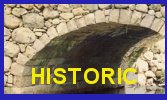
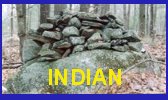
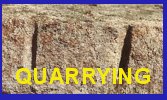
Stonehenge: The Place Where Sun Spirit Entered & Exited Underworld
By Mary E. Gage © February 18, 2023
Additional materials added March 3, 2023
PRINTER FRIENDLY PDF
Introduction
The current theory is Stonehenge is a cemetery for members of the ruling elite families. That could account for the grand, one-of-a-kind stone structure called Stonehenge. What it cannot account for is the earlier bluestone circle that was no different than any other stone circle of its time prior to the Stonehenge circle. Also, the burial theory cannot account for the specific location of Stonehenge.
Research published during the past fifteen years has produced new and interesting findings on Stonehenge. In particular Michael Parker Pearson’s work showing the bluestone Waun Mawn circle in Wales was relocated to Salisbury Plain and would later become Stonehenge. The Salisbury Plain circle has a large number of burials including people who immigrated from Wales. Yet no burials were discovered at the Waun Mawn circle. That shows a major cultural change took place in the relocation process. Pearson discovered an alignment to the summer solstice sunrise at the Waun Mawn circle the same as found at Stonehenge. That shows a cultural continuity. Another continuity was the carryover of an architectural feature. At the Waun Mawn circle one of the entrance stones had a earthen mound next to it while the opposite entrance stone lacked a mound. At Stonehenge each pair of station stones has one stone with a earthen mound and one stone without a mound. The same pattern was repeated.
These three things found at the Waun Mawn circle: (1) lack of burials, (2) solar alignment and (3) architectural feature are the basis for this article. The lack of burials shows the Wales’ circle’s function had nothing to do with death or the afterlife. So why were burials added to the Salisbury Plain circle? The alignment shows the circle’s purpose was associated with the sun. What took place with the sun that was so important? The architectural feature shows intentional replication. That formed the basis for a study of patterns between Wales and Salisbury Plain, and within the various eras of Salisbury Plain’s circle.
The American Indian culture at the time of European immigration to America, was in a similar stage as the late Neolithic culture of Britain’s stone circles. The American Indian Tribes of the American Southwest retained much of their traditional ways when anthropologists recorded their culture in the late 1800s and early 1900s. Whereas Britain’s Neolithic culture having long disappeared it is not possible to gain any insight into it beliefs. But since the United States American Indian culture was still intact it was possible to gain insight into their beliefs.
For example, the American Indian use of astronomical alignments are documented at pre-contact stone structure sites. Thanks to the anthropological accounts we know that these alignments were used for more than just marking a calendar date, they played a critical role in their spiritual beliefs. They believed the Sun transitioned between Upperworld and Underworld on the solstices and equinoxes. That is the Sun’s spirit could separate from the sphere and travel on those days. This was a spirit based belief. If the Sun Spirit did not make its bi-annual transition the seasonal cycle would cease to exist. The people would lose the sun’s light and warmth and there would be no agriculture.
Patterns reveal ideas that were reused. They were looked at in two different ways: repeated as is and how the pattern changed. Those changes showed variations from the Bluestone era to the Sarsen Stone era.
Together the three factors were able to discern basic cultural beliefs embedded in the Salisbury Plain stone circle known as Stonehenge.
Repeated Features that Form Patterns
Pairs of Non-Connected Standing Stones
Professor Mike Parker Pearson and others reported on their archaeological discoveries at the Waun Mawn Stone Circle in their article “The original Stonehenge? A dismantled stone circle in the Preseli hills of west Wales.” (2021) The archaeological excavations revealed stoneholes of which two were different from the others. “Most stoneholes were shallow pits …. containing stone packing …” The two stoneholes that were different “had neither packing stones nor ramp.” These two stoneholes were set up “with their longer sides perpendicular” to the circle thus forming a short passageway aligned to the midsummer solstice sunrise. Pearson recognized the two stoneholes positions and location was associated with the alignment but did not go further with it. [End Note 1] Stonehole #9 has a mound adjacent to it. Stonehole #21 its counterpart does not have a mound. This proved to be an intentional set up as seen at Stonehenge.
In the avenue entrance at Stonehenge is the Heel Stone and its missing partner stone. Evidence of the partner stone is “a large stone hole to the left of the Heel Stone …” The evidence came from an archaeological excavation. [End Note 2] The Heel Stone was erected on top of a circular (barrow) mound. The sparse information on the missing partner stone shows no indication it was set in a mound. Though at this point it is speculative, there is a potential the two standing stones in the avenue – entrance were originally a standing stone with a mound and a standing without a mound. The same feature as observed at the Waun Mawn circle thus creating a pattern. At both sites the stones were in the entrance and both entrances aligned to the summer solstice sunrise by their locations being located on the northeast side of their respective circles. (Technically both circles have a dual alignment midwinter sunset and midsummer sunrise but there is no evidence the midwinter sunset was observed at this stage.)
Patterns
1) Standing stone with a mound
Standing stone without a mound
2) Pair of stones
3) Special stones associated with entrance
 |
Figure 1 – Comparison of the pair of standing stones at the entry to the Waun Mawn circle to the Heel Stone and missing partner stone at Stonehenge. One stone in each pair has an associated earthen mound. Both pairs of stones are part of a summer solstice sunrise alignment. The concept was brought from Wales to Stonehenge.
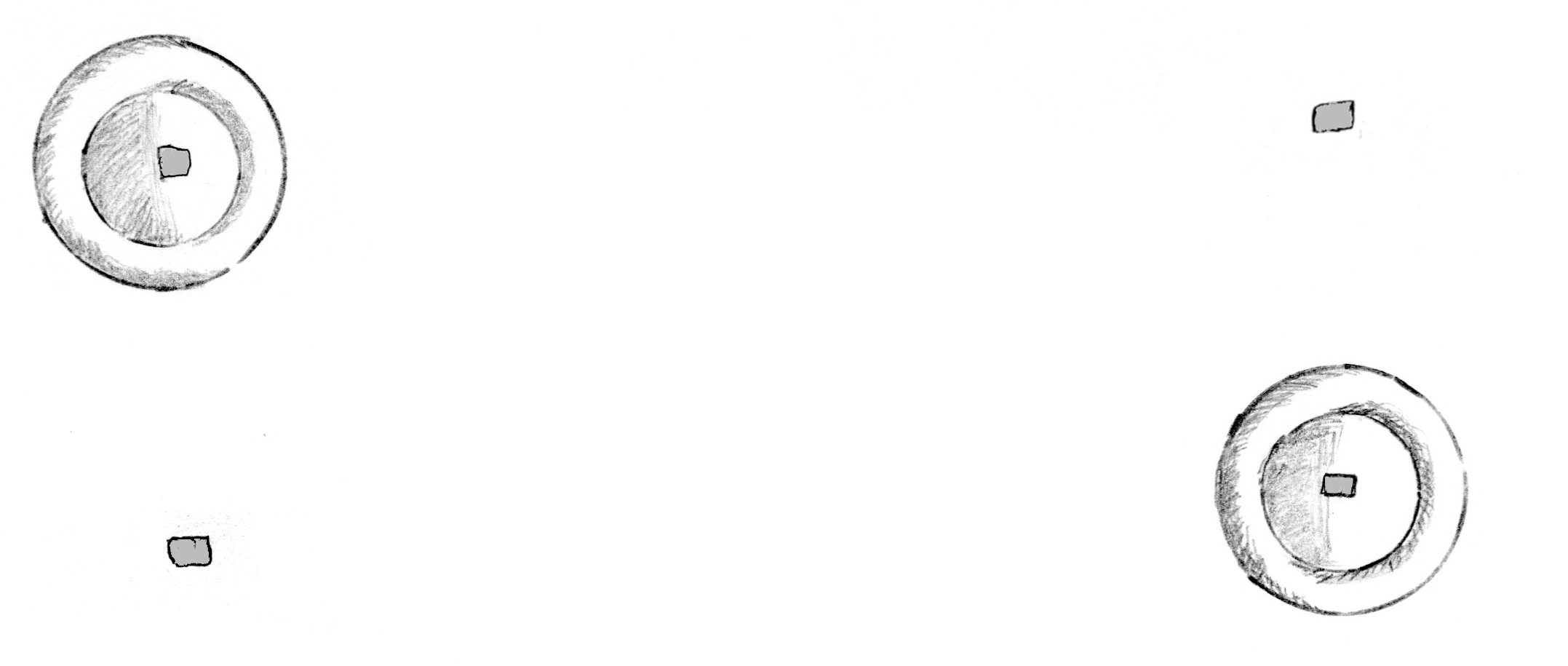 |
Figure 1A – The concept reappears in a later stage of Stonehenge with the stations stones.
Pairs of Connected Standing Stones
According to information found in the book “Stonehenge Revealed” by David Souden, the original bluestone arc had two stones paired-up in a single hole. Next the bluestones were physically attached by “tongue-and-groove” and “mortice and tenon” construction methods. (page 35) It is unknown if the attached bluestones predate the sarsen stones or are contemporary with them. The sarsen stones making up the horseshoe are five separate paired-up sets of two. Each set connected together by a lintel stone with “mortise and tenon”. This kept the pair of two stones and added a third stone making them trilithons. The trilithons formed a set of three creating a new pattern while maintaining the old pattern of a pair of connected stones. Starting with the bluestone arc phase and progressing to the sarsen stone phase there is a progression of connecting pairs of two stones. The paired up standing stones in the bluestone arc and paired up sarsen stones in the trilithons forming the horseshoe support the hypothesis the Heel Stone originally had a partner stone.
Pattern with variations
1) Two standing bluestones in a single hole
2) Two standing bluestones touching each other joined by tongue-and-groove
Two standing bluestones joined by mortise and tenon (unknown if bluestones touched or had a
space between them) (unknown if bluestones with mortise and tenon predated sarsen stones or
were contemporary with them)
3) Two standing stones (sarsen) with a space between them connected by a lintel stone on top
with mortise and tenon
This pattern utilized pairs of stones that evolved into the trilithon, a three stone set up creating a three stone pattern. The set of three incorporated pairs of non-connected stones (see stage 3). Pattern within pattern.
 |
Figure 2 – Variations of the pair of connected stones concept
Bi-Colored Path
Milk white chalk ridges with a wide gully between them were discovered during excavations conducted by Michael Allen and his associates (2016). The chalk ridged path established the basic path or avenue concept. Though the term path may be misleading as the area in the middle was a series of low ridges covered with vegetation and not conducive to people walking on it. The middle did eventually get filled creating an actual avenue. The original configuration was a path-like feature lined with white chalk on the sides and a darkish colored middle. This concept of paired opposites (dark and light colors) forming a path is repeated. At the summer solstice sunrise, the Heel Stone and its Partner Stone cast long shadows (dark) with a path between them lit by the sun (light) thus forming another example of the bi-colored path. This will be discussed in greater detail later. Also, as analysis continued the color white turned out to be a repeated feature.
The basic pattern is a bi-colored linear feature. Outer lines are one color and middle is another color.
Discussion
Patterns came in various forms. Any feature or characteristic that got repeated two or more times was termed a pattern. Some patterns were repeated as is and some were altered slightly and/or created an additional pattern.
Non-Repeated (One-of-a-kind) Feature
Altar Stone
The Altar Stone appears to have been a single stone thus out of character with the pairs of stones. Since there is a potential the Altar Stone was a critical part of the site it is being introduced at this point.
The anonymous author of the “Landscape and Monumentality” blog, wrote on July 24, 2018: “During his work at Stonehenge Richard Atkinson investigated around the Altar Stone and found one end badly shaped from souvenir hunters chipping pieces off, but the other end was a bevelled shape, similar to the bottom end of some of the sarsens …” [End Note 3] This suggests the Altar Stone originally was an upright standing stone. The drone photograph with the article shows the Altar Stone lying prone on the ground. Its position straight across the front of the trilithon suggests it was purposely laid down. Had it been knocked down when the trilithon fell, it would be expected to be at an angle to the trilithon not perpendicular. If the altar stone was upright, where was it originally located? This will be explored in the next section.
The stone is described as being a “greenish sandstone with mica”. What is of interest is the “mica”. Mica picks up light making it sparkle. The current location of the Altar Stone is on the duel alignment line.
Projected Progression
Projected progression is based on the new patterns found by the author and used in conjunction with the stages in Pearson’s 2009 article “Who was buried at Stonehenge.”
The projected progression section is so named because it includes two ideas not proven conclusively through the archaeological data: (1) the Heel Stone had a partner stone (2) the Altar stone once stood in an upright position. Both hypothesis are included in this reconstruction of the various stages of Stonehenge. Both fit well into the architectural patterns discussed in this paper.
Pattern analysis can be somewhat abstract at points. Another way of looking at this, is to consider these patterns as cultural ideas and architectural elements. For example, Roman Catholic churches have evolved through a number of distinct architectural styles over the centuries which reflects the changing tastes of society. However, the basic layout or floor plan remains largely unchanged. Each church has some basic core elements like an altar, pulpit, seating for the congregation, a steeple, etc. This cultural process is referred to by anthropologists as continuity and change. It is useful to evaluate Stonehenge’s evolution from this perspective. The patterns are essentially cultural ideas and/or architectural elements carried forward in time both changed and unchanged.
The author utilized these patterns to fill in gaps in the archaeological record for the site. In this case a partner stone for the Heel Stone and potential upright position for the Altar Stone.
Bluestone Period – Stage 1 (Based in part on Pearson)
In stage 1 the ditch-mound feature is created and the bluestones erected around its inner perimeter. The chalk path and circle are connected on the northeast side with an opening in the circle aligned to the summer solstice sunrise. This is the same solar alignment as discovered at the original stone circle, Waun Mawn in Wales. The white chalk ridges introduced the color white and the dark/light path concept. Erected inside the chalk ridged path was the Heel Stone and its partner stone.
The Heel Stone and its partner stone framed the rising sun on the summer solstice. In doing so, the pair of standing stones cast a pair of long shadows creating its own path thus continuing the white chalk path into the interior of the circle. The shadow path was the reverse of the chalk path in which the outer lined features were dark and the middle was light. That said, the pair of shadows emulated the chalk ridged lined path. The shadow path extended part ways into the circle versus stopping at the opening (based on the Heel Stone’s shadow). It is hypothesized the shadow path was associated with the Altar Stone suggesting it was erected during this first stage. [End Note 4]
The Altar Stone is infused with mica. Mica readily picks up light and reflects it outward. Early morning sunlight shining on the Altar Stone likely made the stone light up brilliantly.
The combined components indicate they were arranged to create a sunrise alignment. The chalk ridge path combined with the pair of standing stones framing the rising sun and casting a shadow path extending through the opening in the ditch/mound on into the circle on its northeast side and ending at the Altar Stone created an alignment to the summer solstice sunrise.
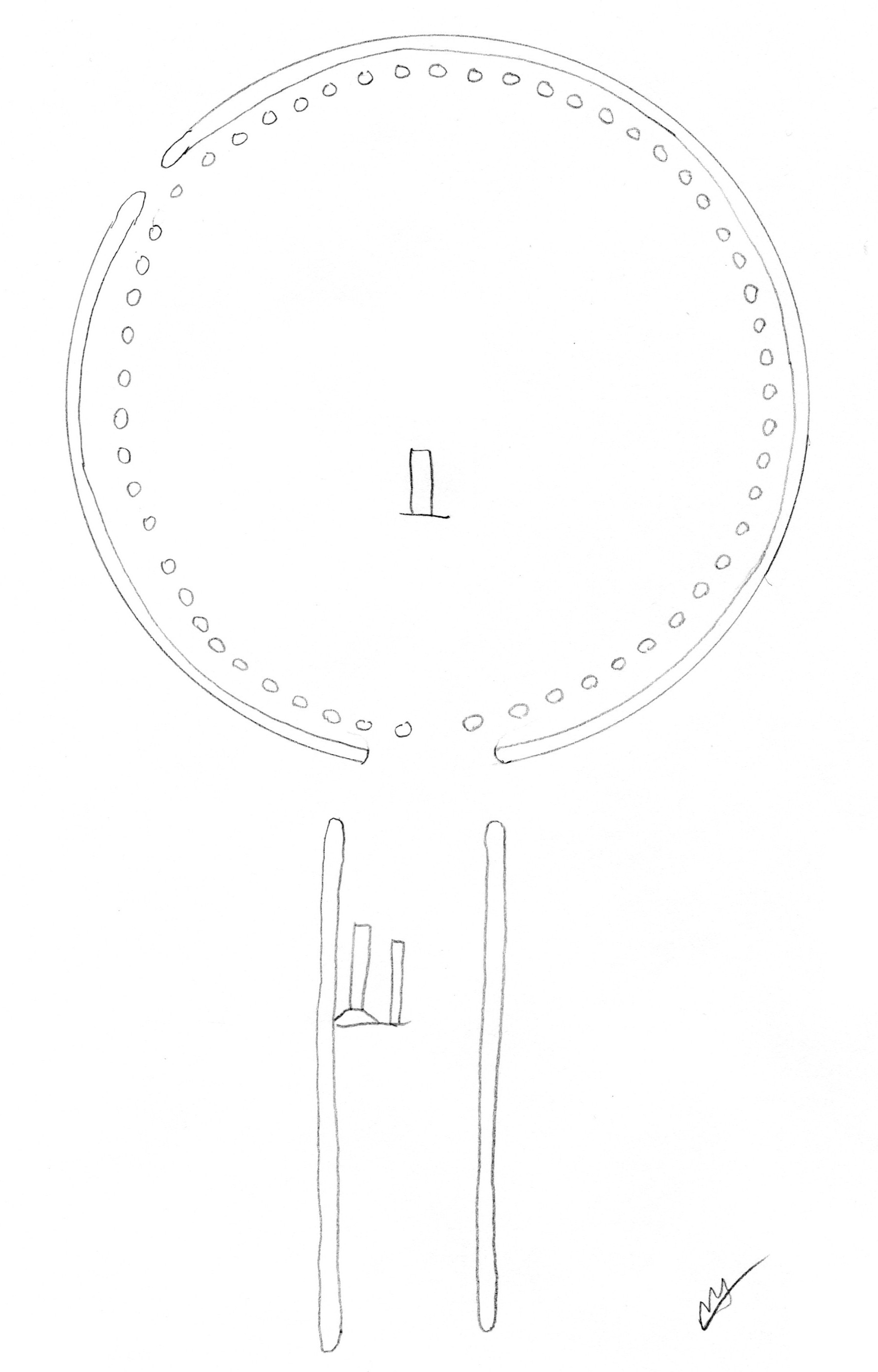 |
Figure 3 (right) – Stage 1; Aubrey holes / 1st bluestone circle, Heel Stone & partner stone inside of white chalk ridges, Altar Stone in an upright position inside the circle.
Bluestone Period – Stage 2 (Based in part on Pearson)
The bluestone arc is constructed. The arc created an open-ended enclosure. The bluestones were set two to a single hole thus establishing the connected pair concept. The pair pattern that utilized the non-connected pair pattern in stage 1 is altered slightly by connecting the pair of stones showing a transition. The large house/hall was erected at the south entrance. Pearson pointed out this was probably the main entrance. That indicates the chalk ridged path was not a people entrance.
During stage 2 the chalk ridged path, Heel Stone and its partner stone, and Altar Stone remained in use as in the previous Bluestone period – stage 1.
Question: Could the outer bluestone circle have remained intact and the inner bluestone arc been added to it? A circle with an enclosure inside it.
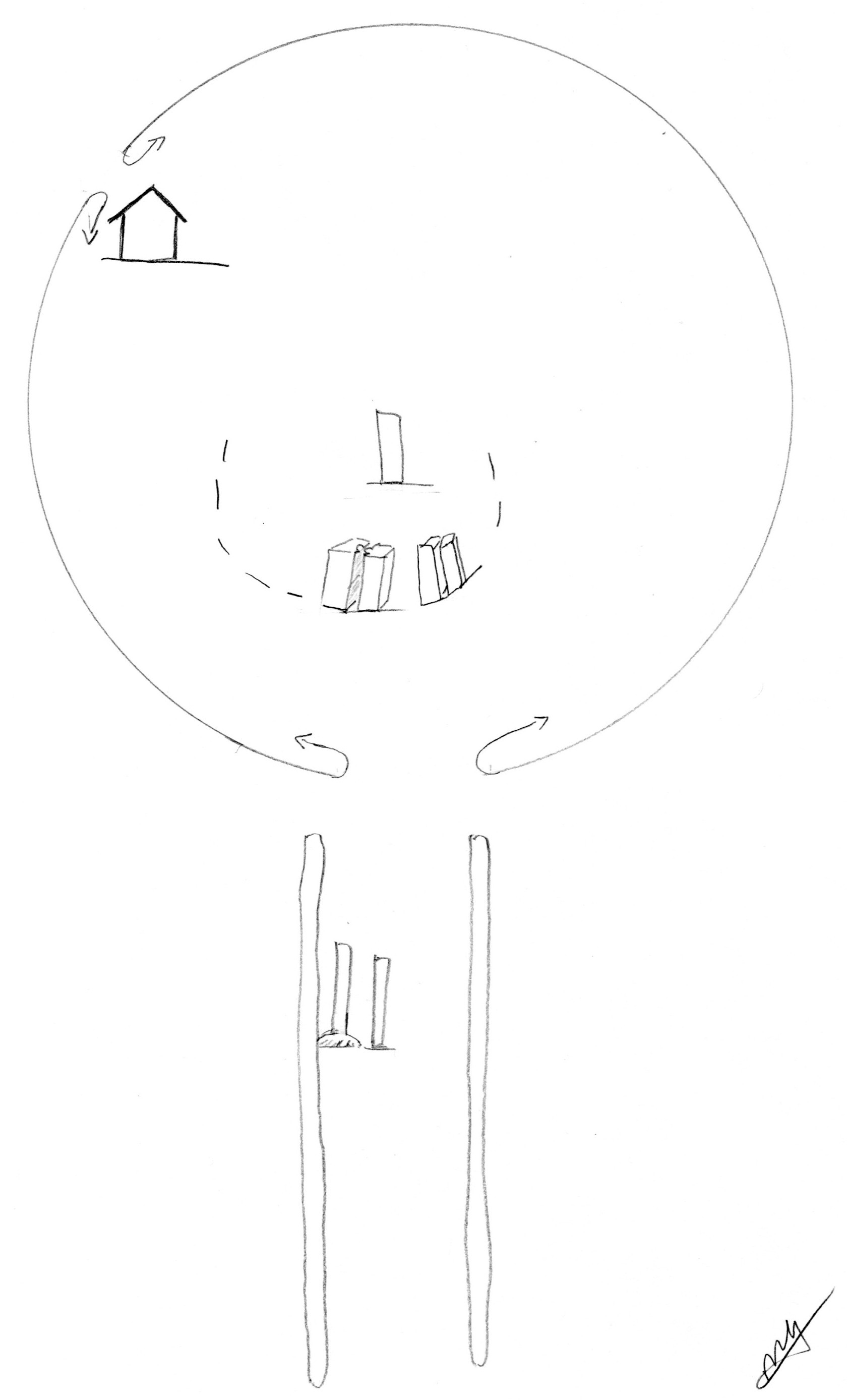 |
Figure 4 – Stage 2: Bluestone arc period with large house, Altar Stone,
Heel Stone & partner stone in entrance, and chalk ridges.
Stage 3
Stage 3 introduces major changes and at the same time carries forward old patterns. In this stage the bluestones are removed and replaced with sarsen stones. The sarsen stones were worked in the chalk ridged path which may have necessitated the removal of the Heel Stone’s partner stone to move the giant stones into the circle. Removing the partner stone did more than free up space in the path, it eliminated the second standing stone that framed the summer solstice sunrise and formed the shadow path connecting the chalk ridge path to the interior of the circle.
The sarsen stone circle had its tall standing stones connected to each other with lintels. In doing so, the standing stones were physically linked to each other and formed a continuously connected circle without a break. While the open gaps between the sarsen stones allowed the people to enter the circle.
The trilithons making up the horseshoe were individual features incorporating the connected pair pattern. The connected pair pattern that utilized two stones in a single hole in stage 2 is upgraded by connecting the pair of standing stones with a lintel. This transition in the pair pattern in turn introduced the three pattern.
The horseshoe feature is an open-ended enclosure encircled by the outer sarsen stone circle. What is its origins? Is it possible the bluestone arc, an open-ended enclosure, was erected inside the bluestone circle (or wooden post circle) while it was still in place? That would answer the question of the origins of the horseshoe inside a circle. Furthermore, the trilithons utilized the basic connected pair pattern used to construct the bluestone arc. That can not be a coincidence.
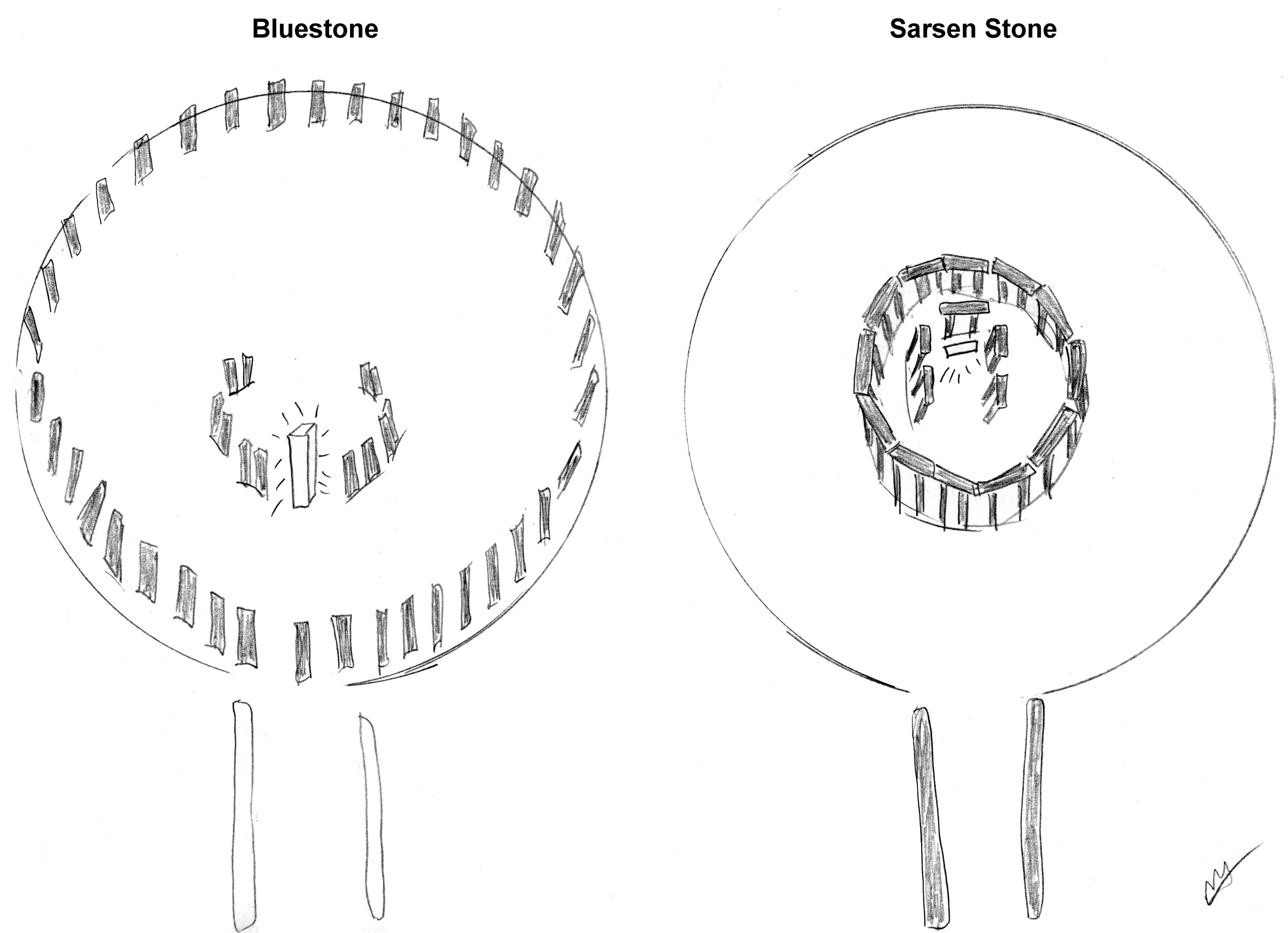 |
Figure 5 – The projected bluestone circle and arc form a visual pattern matching the sarsen stone circle and horseshoe.
Inside the circle is the Slaughter Stone thought to have once been an upright standing stone. What was its purpose? With the removal of the Heel Stone’s partner stone the two pattern was disrupted. The Slaughter Stone may have been erected to restore this non connected pair pattern. There is merit in the idea if the Heel Stone on top of its mound was paired up with the Slaughter Stone erected on the ground’s surface without a mound. The non-connected pair of stones pattern is seen in the Station Stone set ups erected during this stage. In each set, one Station Stone was set up on top of a mound. The second Station Stone was set up a distance away on the ground. That created the same arrangement as the Heel Stone and Slaughter Stone. This was a carryover from stages 1 and 2 with the non-connected pair of stones, Heel Stone and its partner stone.
The two pairs of non-connected Station Stones added to the Heel Stone & Slaughter Stone created a set of three. The set of three was a pattern within a pattern. It incorporated pairs of non-connected stones with a set of three pairs of non-connected stones. (See figure 6)
The Station Stone on a mound on the south side was built on top of the location of the large house/hall. The mound’s location appears to have blocked the old south entrance.
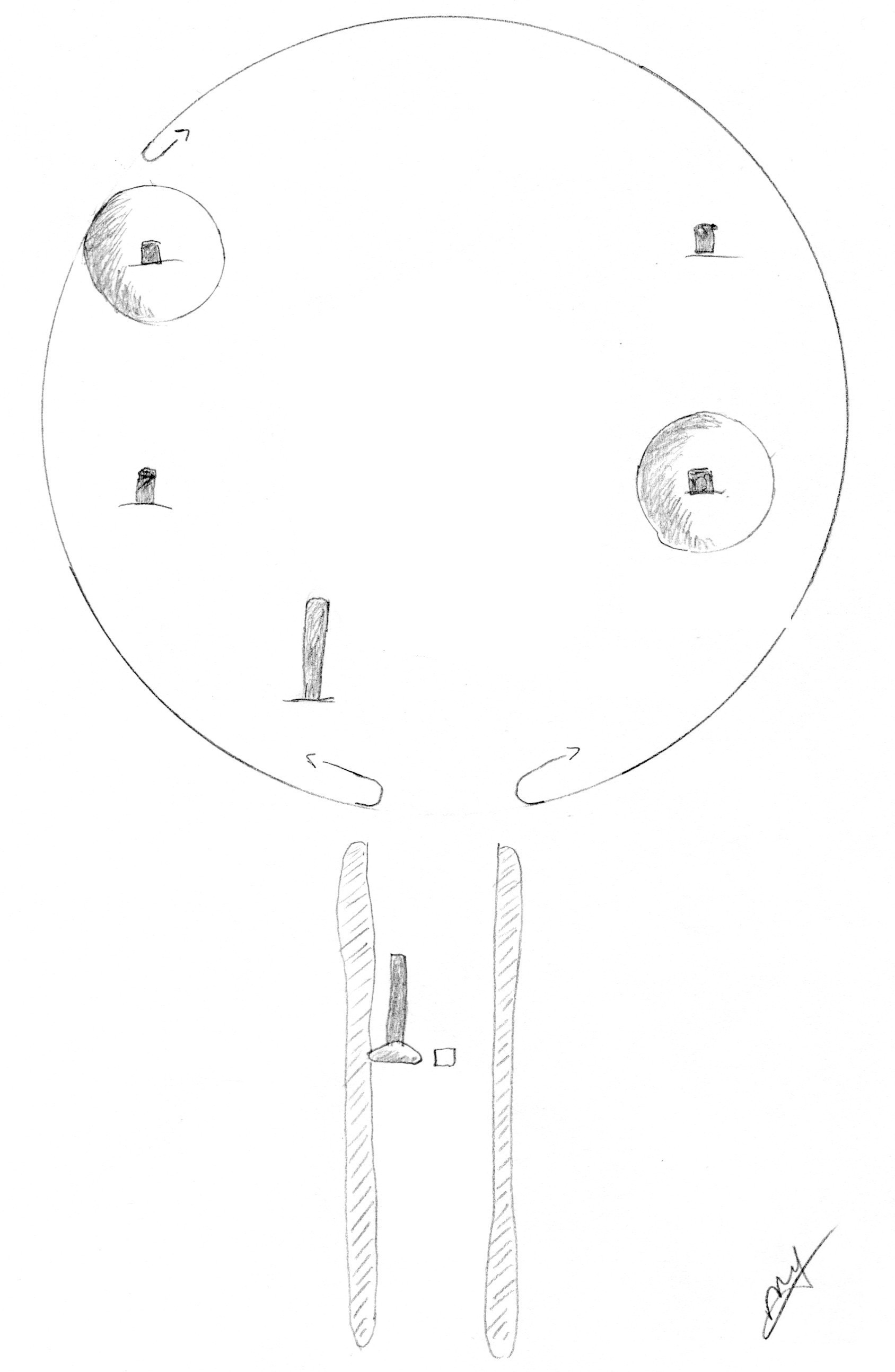
Figure 6 – Stage 3: Sarsen stone period: Station stones added, Heel Stone’s partner stone is removed, Slaughter Stone is add (paired with Heel Stone.) This creates three pairs of standing stones.
The Altar Stone was retained from the previous stages, moved to its current location and laid flat on the ground changing its position. Repositioning the stone indicates it was repurposed. Its retention indicates it had an important role. This appears to be speculative but the shadow pattern from the trilithon supports this idea.
The extra tall trilithon on the end of the horseshoe framed the setting sun on the winter solstice. This created a pair of long shadows with a gap between them. In addition, the lintel on top created a closed-in end forming a rectangular box. The pair of shadows from stages 1 and 2 were reconfigured and reversed. The opening in the shadow allowed the sun’s rays to shine down the middle across the center portion of the now prone Altar Stone. That made the Altar Stone with its mica light up brilliantly at sunset on the winter solstice alignment.
The move accomplished two objectives: continued to dismantle the summer solstice sunrise alignment and create a new alignment to the winter solstice sunset. By moving the Altar Stone into the actual center it was placed beyond the reach of the Heel Stone’s shadow on the summer solstice. (see “The Shadow of the Heelstone”) By laying the Altar Stone flat on the ground it prevented light from the summer solstice sunrise alignment from hitting it.
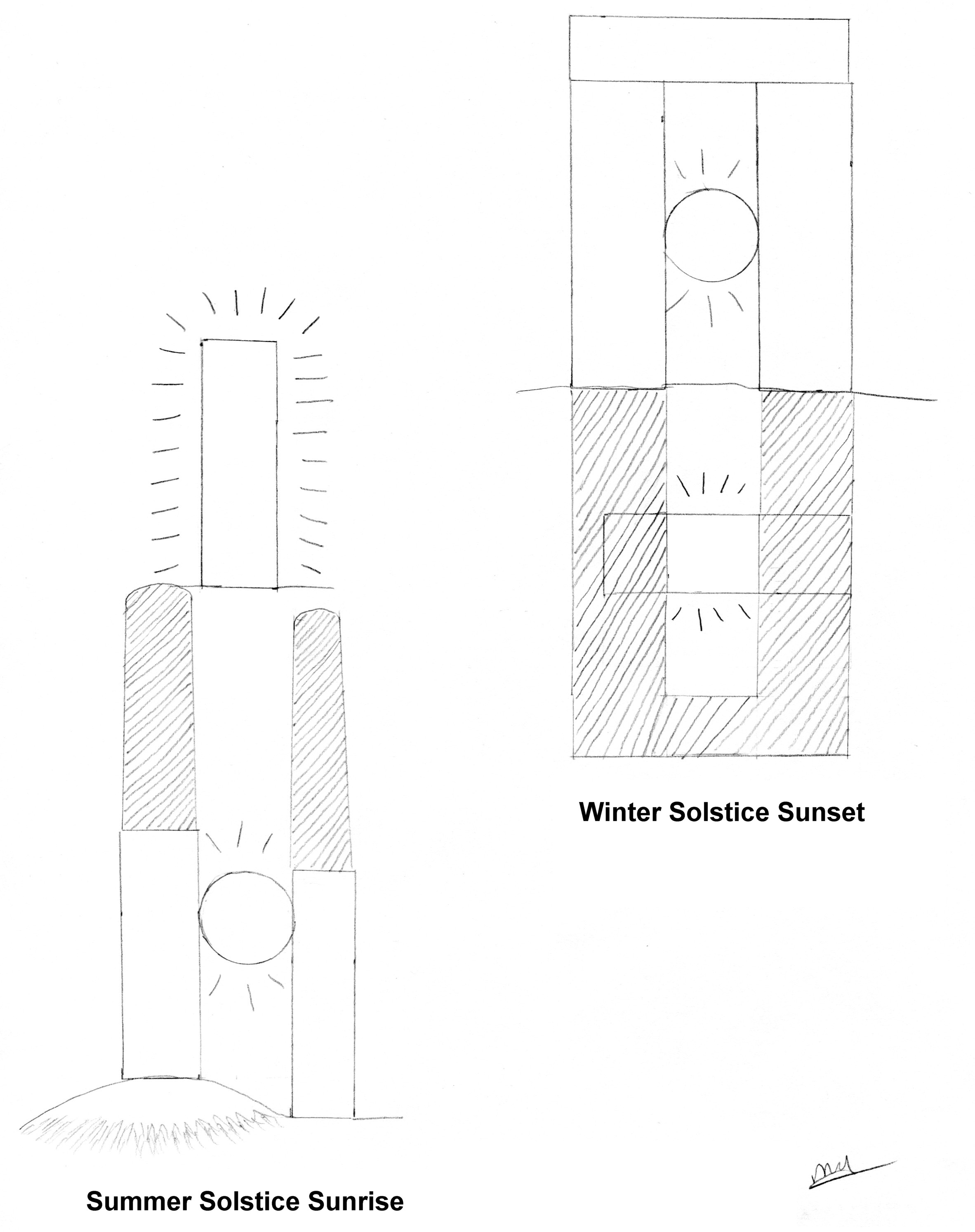
Figure 7 – Use of shadows at the summer solstice sunrise alignment and winter solstice sunset alignment
Simon [Banton (?)] author and photographer of “The Shadow of the Heelstone” blog entry took photographs of the shadow created by the Heel Stone ten minutes after initial sunrise one day after the summer solstice on June 22, 2020. [End Note 5] The tip of the shadow appears at the base of a sarsen stone forming the circle. Had Simon been able to take the photograph at actual sunrise (ten minutes earlier) it would not have cast a much longer shadow. His photograph proves the end point of the Heel Stone shadow could only reach up to the sarsen stone circle and not into the center of the horseshoe, the present location of the Altar Stone.
Question: Why is the sarsen stone circle’s perimeter at the edge of the Heel Stone’s shadow? Was it coincidental or intentional?
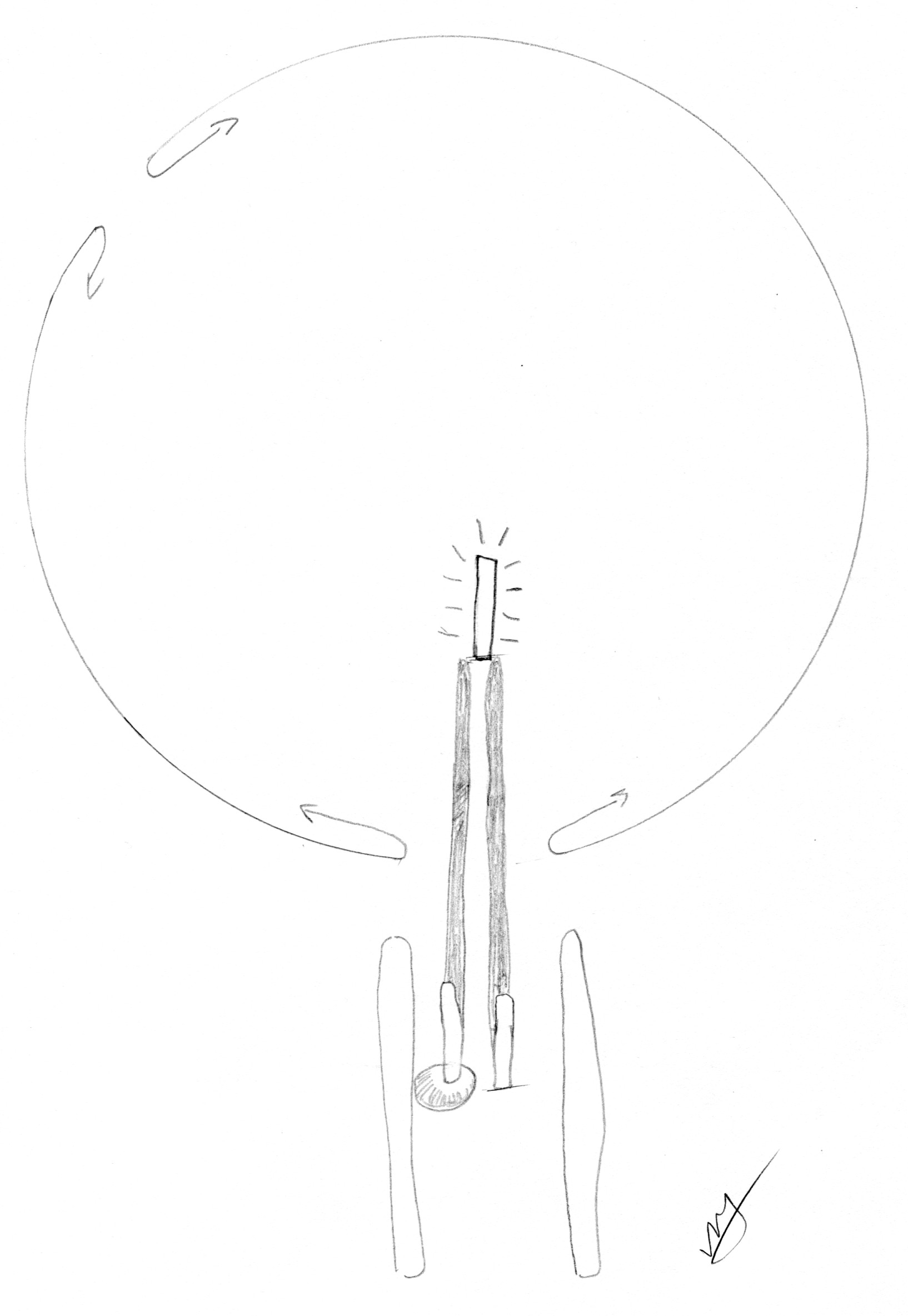
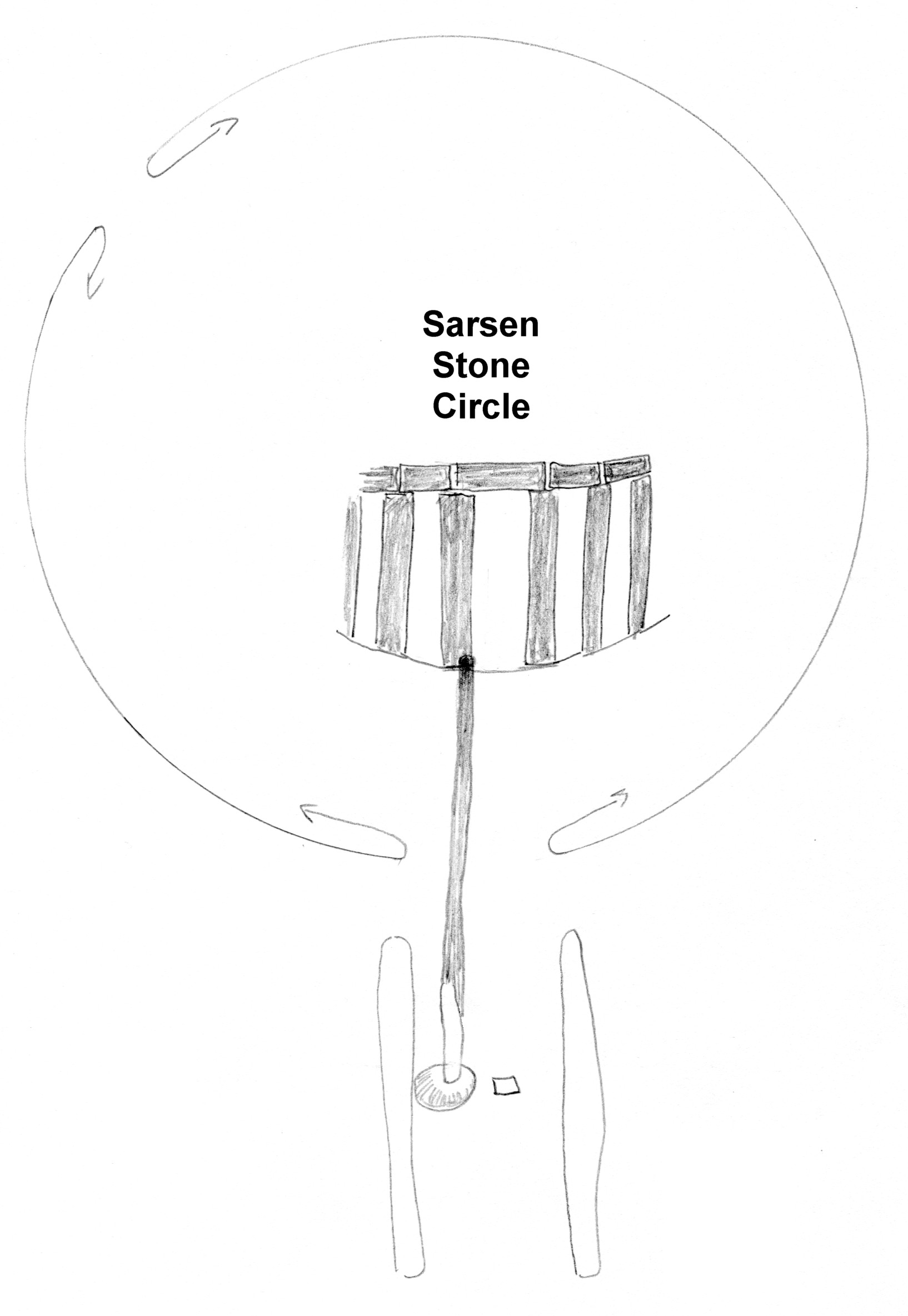
Figure 8 - (Left) Heel Stone and partner stone created a pair of shadows that reach up to the Altar Stone. (Right) Heel Stone shadow reaches sarsen stone circle (10 minutes after initial sunrise). This indicates it did not penetrate much further into the center. In turn, it suggests the original location of the Altar Stone was close to the outer edge of the present sarsen circle during the bluestone era.
After the sarsen stones were erected the gully between the chalk ridges was filled in to create an avenue. Allen felt the chalk ridges had naturally covered over but they may have been intentionally covered. First a pair of linear earthen mounds was erected along the interior replacing the parallel chalk ridges defining the path. Of note the linear mounds were not constructed on top of the raised chalk ridges indicating the Sarsen Stone people intentionally avoided using the chalk ridges which would have enhanced the height of their linear mounds. Whether, natural or artificial the covering of the chalk ridges closed the feature that was important to the Bluestone people and associated with the summer solstice sunrise alignment. This keeps with the other summer alignment closures (removal of Heel Stone’s partner stone and relocation of Altar Stone). The avenue’s south end connected with the circular ditch-mound opening on its northeast side creating a new main entrance for the people. Again, here is evidence of another change from the old Bluestone people’s entrance on the south side of the circle, essentially reversing the order of the layout. Example, the horseshoe’s open side is the reverse of the bluestone arc’s open side.
The white feature from the chalk ridges gets relocated showing it was retained and suggesting it had to have been important to the Sarsen Stone people as well as their predecessors. White chalk was used as the top layer of re-fill in the re-cut ditch. That created a milk white layer within the circular ditch. “The chalk in the upper fills of the re-cuts is much cleaner than would be expected in a re-cut ditch’s secondary fills and does indeed hint at active incorporation of clean chalk …” [End Note 6] The use of the milk white chalk in the ditch reflects the use of the milk white chalk ridged path. The repeated use of the chalk shows intentional use of the color white in all three stages.
Viewing the Alignments
During the Bluestone period people entered the circle from the south putting them in a position behind the Altar Stone facing the rising sun on the summer solstice. At sixteen feet high the stone blocked the rising sun framed between the two standing stones thus the people did not view the actual alignment. The Heel Stone and its partner stone blocked out the peripheral sunlight on the sides focusing the light on the Altar Stone. The focused light created a halo glow around the Altar Stone being viewed from behind by the people. The stone’s backside in shadow would have accentuated the halo glow. (Figure 9)
The evidence indicates someone within the Bluestone culture observed the halo phenomenon prior to creating the alignment. The glowing halo phenomenon was likely associated with a spiritual connotation. In turn, a stone with the halo glow (mica infused) that conformed to the proper shape and size was selected for the special purpose. Moved to the Salisbury Plain site from 100+ miles away its origins were likely a closely guarded secret. This was thought out in advance and in detail as the alignment involved not one stone but three stones.
During the Sarsen Stone period the people entered the circle via the avenue from the northeast facing the sunset on the winter solstice. This was the only position to be able to view the alignment through the trilithon. The trilithon’s pair of shadows crossed the outer sections of the prone Altar Stone leaving only the middle section in light. That would have enhanced the light hitting the Altar Stone. This too was thought out and planned in advance of creating the new alignment.
To create these alignments the sunlight had to be intense and strong. For that to occur the sun had to be low in the sky but above the horizon. Proof of alignments taking place with the sun low in the sky but above the horizon comes from a site in New England: America’s Stonehenge. The summer solstice sunrise alignment is viewed over the top of a standing stone. It takes place a half hour after sunrise on the horizon when the sun’s sphere peeks over the lower corner of alignment stone. This was viewed with the naked eye by the author. The 2020 photograph of the Heel Stone shadow hitting the sarsen stone circle ten minutes after initial sunrise is likely representative of the Bluestone’s sunrise alignment.
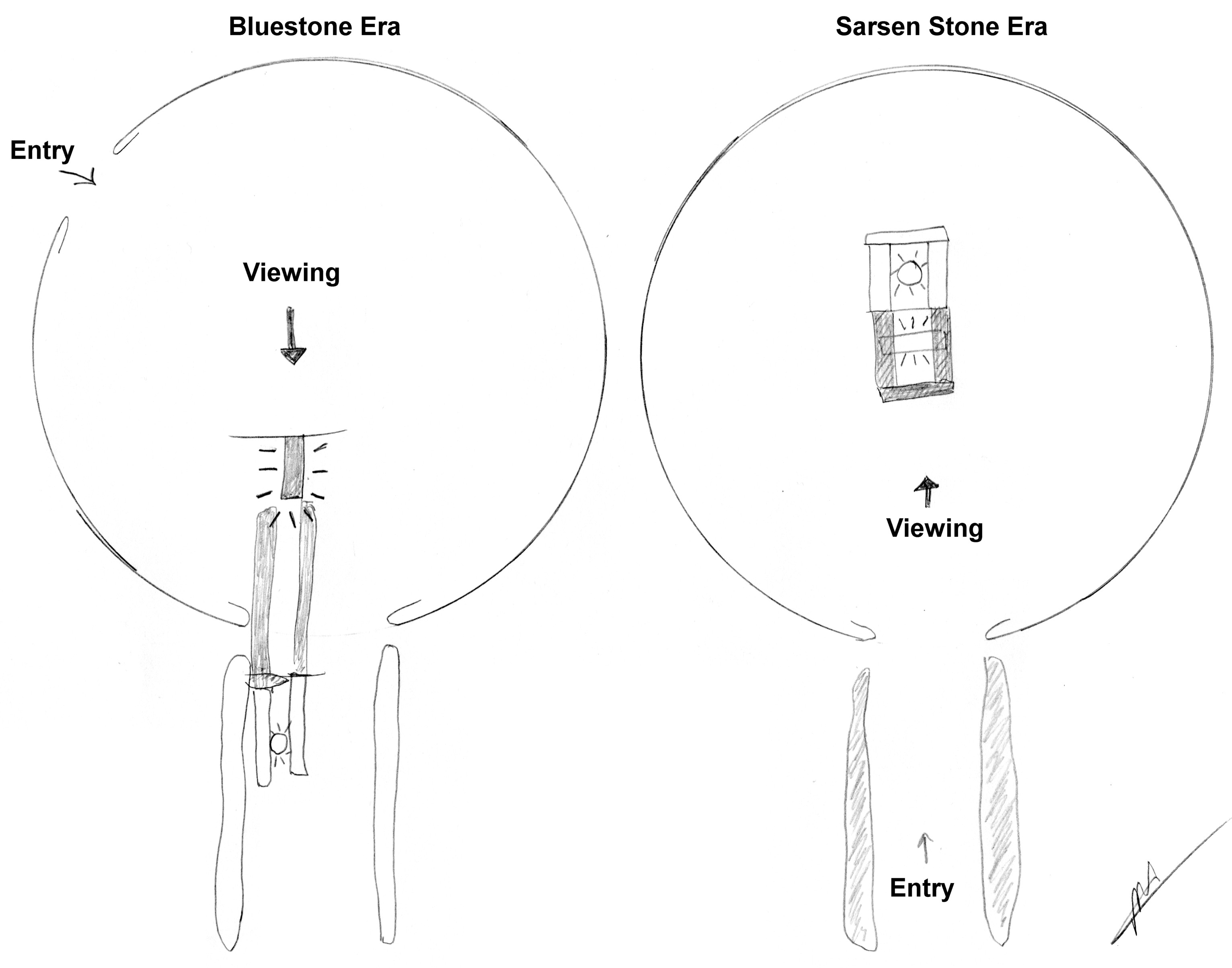
Figure 9 – (Left) The summer solstice sunrise was viewed from behind the upright altar stone, so the viewer saw the back of the stone not the rising sun. (right) The winter solstice sunset was viewed over the altar stone laying on the ground thus giving the viewer a direct sightline of the setting sun.
Discussion
The bluestone circle and its inner bluestone arc along with the non-connected Heel Stone and its partner stone, large hall and Altar Stone are the basic format used by the next generation, the Sarsen Stone people. The Sarsen Stone people make alterations by moving the large hall to their village site evidenced by several buildings documented as not being habitation units. [End Note 7] They reject the short bluestones and install the tall sarsen stones thus maintain the standing stone concept. They carryon the pairs of connected and non-connected stones. They keep the ditch-mound, and stone circle with an open-ended enclosure inside it. They retain the Altar Stone. They retained the incorporation of the color white, long shadows and an alignment albeit it is switched to the midwinter solstice. Human burials continue to take place. Every aspect of the Sarsen Stone period can be traced back to the Bluestone period.
The summer solstice sunrise alignment can be considered conjectural until its elements are compared with the winter solstice sunset alignment. The winter solstice sunset is still partially intact. It consists of the trilithon, a pair of standing stones with a lintel on top. The trilithon frames the setting sun on the winter solstice. It creates a pair of shadows with an opening letting a band of light fall on the ground and thus across the Altar Stone. The sarsen stone period’s entrance faces the setting sun. The summer solstice sunrise alignment originally had a pair of standing stones, the Heelstone and its partner stone that framed the rising sun on the summer solstice. This pair of standing stones created a pair of shadows with an opening letting a band of light down a path to light up the Altar Stone. The bluestone period’s southern entrance approximately faces the rising sun. With the winter solstice sunset the people view the sunlight hitting the Altar Stone. With the summer solstice sunrise the people view the shadowed back of the Altar Stone. These are opposites like the sunrise and sunset. Though in shadow there is a halo glow illuminating the Altar Stone it is not static. The evidence suggests there were two alignments used one per culture.
The question is where did the conceptual belief of burials associated with the sun’s yearly cycle and color white come from? Can it be traced back in time?
Back Tracing Concepts
Burials
Sometimes what is missing is just as important as what is present. There was no mention of burials in the excavations of the stone holes at the Wales Waun Mawn circle. At Stonehenge the remains of cremation burials was common place. This shows a radical cultural change. It infers the Bluestone people added their dead ancestors to the ceremony after they relocated to Stonehenge. The burials were a critical part of the ceremonial site. Pearson’s observations indicate it was “… the burial ground of a ruling elite family …” [End Note 8]
Color White & Alignments
The Bluestone people moved their stone circle to Stonehenge circa 300 years after Newgrange was built. At the time they were living off the coast of Ireland within sailing distance and likely participating in trade with their neighbors. Trade goods are never the only thing traded, ideas were also exchanged. People traveled east to west and west to east. Trade is reciprocal. That would have put people from west Wales on the ground in Ireland and likely in contact with the elaborate ceremonial chamber at Newgrange.
Newgrange has a large milk white stone lined exterior light box. The box focuses the sun’s light on the winter solstice at sunrise into the interior of the dark chamber lighting up the interior. The chamber was used as a burial tomb for the dead. At the chamber the sun and dead were brought together.
A comparison of features between Stonehenge and Newgrange: Stonehenge during the Bluestone era had a set of milk white chalk ridges. Newgrange had its milk white light box. Stonehenge had burials inside the circle, Newgrange had burials inside the chamber. Stonehenge had a summer solstice sunrise alignment, Newgrange had a winter solstice sunrise alignment. Both structures have a light channel. Chamber has a channel to funnel the sunlight into the interior on the winter solstice. Circle has a pair of parallel chalk ridges lined up with the sunrise on the summer solstice. The parallels do not appear to be coincidental. Newgrange was in existence by the time the Bluestone people visited thus had the high potential of having a profound impact on them.
These two cultures one with simple stone circles and the other with elaborate stone chambers could not be more different. Yet there is the real potential the Newgrange culture influenced the Bluestone culture. Could they possibly have had a shared common belief? At that point in time the Bluestone people had not yet combined the dead with the sun, therefore the common belief could only be the sun’s alignments.
Underworld
To go inside Newgrange chamber was to go underground into the spiritual Underworld. The individual rooms within the chamber were the open repositories for the dead. Each deceased person’s body with its own spirit made the chamber a place of spirits. As such it created a large gathering or community gathering of spirits.
In the USA anthropologists recorded American Indian accounts about the Underworld. The American Indian’s view of the Underworld was vastly different than the Christian Euro-American’s view. American Indians believed both Upperworld and Underworld were similar to each other but at the same time opposites. This example comes from the Cherokee. “There is another world under this, and it is like ours in everything–animals, plants, and people–save that the seasons are different. We know that the seasons in the underworld are different from ours, because the water in the springs [places where water comes out of the ground naturally] is always warmer in winter and cooler in summer than the outer air.” [End Note 9] Another example comes from Jonas King, an Ojibwa who noted one winter a moose carried two boys off to the underground world where there was no snow. [End Note 10] One account cross-checks the other account. The two accounts come from different tribes and geographical areas in North America.
This account comes from Ludlow Cave in the Black Hills of North Dakota, USA. “Its walls were covered with rock art and its floor blanketed with offerings when non-Indians first described it in 1874. … it was used for at least 2,000 years. It contained artifacts from the Mandans, Hidatsas, Cheyennes, Lakotas, and probably Crows. The Mandans and Hidatsas viewed the narrow crevice extending back from the main cave some 400 feet as a passageway to the underworld.” [End Note 11] So sacred was this natural cave it was shared by several tribes who normally did not get along with each other. American Indians were highly territorial.
The examples are presented to introduce what the Underworld meant to American Indians during their agricultural periods. In the Ludlow Cave example the entrance was through a narrow crevice or split. The “split” concept being a portal for spirits to enter/exit the Underworld was wide spread in the USA among the American Indians.
Sun Spirit & Underworld
Ogauns, an Ojibwa Indian from the Great Lakes region, recounted a vision in which he traveled into and through the Underworld. According to Ogauns, he was joined by “my friend, one of the suns in our sky who had come to join my expedition … My companion [the sun] attacked it [evil spirit] while I tugged desperately at the arrows in its mate.” [End Note 12] In this account, a person’s spirit traveling in Underworld seeking a vision was accompanied by the sun who provided light and assistance in fighting evil spirits. Underworld contained both good and evil spirits as confirmed by Ogauns meeting the “blessed manido”. “My companion [sun spirit] and the child waited behind while I pressed forward to the place where I should meet the blessed [sacred] manido.” [End Note 13] This manido granted him his vision.
In the above account two things are expressed (1) Sun Spirit goes into Underworld and (2) Sun Spirit assists a person’s spirit. What is less known is the reverse also took place in which people assisted Sun Spirit. In this quote the anthropologist Mischa Titev, who studied the Hopi in the American southwest, wrote, “…the Star (Sun) chief’s twirling of a shield is intended to aid the sun in its journey from one solstice point to the other.” [End Note 14] The rite was designed for the people to assist the sun in its travels.
Sun Spirit’s Two Homes: Underworld and Upperworld
In another Hopi account people assist the Sun Spirit in its travels between worlds, “The ladder prayer stick is used in the Winter Solstice ceremony in a symbolic way, being in fact an offering to the sun, which is supposed to be weary at that time and in need of assistance in climbing from his home in the under-world to the sky.” [End Note 15] During the ceremony Sun Spirit is said to travel from its winter home in the “under-world” to its summer home in the “sky” (i.e. Upperworld).
The American Indian culture in the late 1800s was emerging out of their Late Ceramic/Woodland period similar to the Neolithic period. It has the potential to provide clues to the beliefs of the Britain’s stone circle cultures. Of particular interest are their beliefs in the Underworld and their conception of splits being exits and entrances. The chalk ridged path has the potential to have been viewed as a split, a portal to Underworld. This is inferred by the set of chalk ridges with a gully like open space between them and by Newgrange chamber’s light channel.
Sun’s travel between worlds evidenced in stone structures
In the northeast region of the USA there was prolific use of stone structures for ceremonial purposes. Some of the structures incorporated astronomical alignments. A site called America’s Stonehenge in North Salem, New Hampshire has four alignments: winter solstice sunset, equinox sunrise, and summer solstice sunrise and sunset. They were expressed with the use of individual standing stones. The winter solstice and equinox alignments have split stone features associated with them. The split stone associated with the winter solstice is downhill and west of the alignment stone. At sunset the sun appears to go into the split (personal observation). The split stone associated with the equinox is beside the alignment stone. It is a large flat-topped split glacial boulder with a niche attached to its east end. The small size of the niche suggests a perishable offering (tobacco, food, etc.) was placed inside it to call the Sun Spirit out of Underworld. That was done so Sun Spirit could rejoin the sphere of the sun when it rose over the alignment stone with a slight concave feature on top of the stone. The small inward curved feature appears to temporally hold either Sun Spirit or sphere of sun so the two can rejoin each other.[End Note 16]
Stonehenge as a Sun Ceremonial Site
For many researchers, the summer solstice sunrise alignment is thought to only have had a calendar function. In light of the American Indian’s beliefs regarding the sun, the calendar interpretation is misleading. It was more a spiritual/religious function. [End Note 17]
The Hopi solstice ceremony shows the sun was believed to be a spirit. Therefore the ceremony was held for a spiritual/religious purpose reflected by the prayer stick offering.
At America’s Stonehenge on the winter solstice the sun appears to go into the Underworld via a split in the rock but the next day the sun rises as usual in the sky. What took place? It is interpreted Sun’s spirit separated from the sphere and remained in Underworld for the winter. The sun’s daily appearance brought light but no warmth to earth during this period. This is cross-checked by the account that states, “there was no snow” during the winter in Underworld implying it was experiencing summer while earth was in its winter phase.
In Ogauns account the man’s spirit leaves his body and is joined by Sun’s spirit who leaves the sphere of the sun, together they journey into Underworld. The concept of a spirit separating from its physical body is common among American Indians. This accounts for Sun Spirit going into Underworld for the winter months while its physical body the sphere of the sun appears daily in Upperworld during the winter.
Based on the American Indian belief of the sun’s spirit separating from the sphere and going into Underworld for the winter, it is interpreted the same occurred in Britain. At America’s Stonehenge the physical evidence indicates Sun Spirit entered and exited Underworld. At Stonehenge the set of milk white chalk ridges with a gully reflect a split in the earth’s surface. Aligned with the summer solstice sunrise it can be extrapolated Sun Spirit exited Underworld via the gully to rejoin the sphere of the sun and thus enter Upperworld for the summer.
On the winter solstice the reverse occurred at the Newgrange chamber. In turn, it suggests the solstices were viewed as special days on which the Sun Spirit could travel between worlds.
Death & Burial Associated with the Sun
The burials at Stonehenge have intrigued researchers since they were originally found. The looming question, why were the dead buried at the stone circle? This practice began long before Stonehenge with the Bluestone people who interestingly did not carry it from their homeland. At their original bluestone circle in Wales there were no burials. Burials on the other hand were a major part of the Newgrange chamber indicating the practice may have been adopted by the Bluestone people from the people who would later become known as the Irish.
The Newgrange chamber and Salisbury Plain stone circle (bluestone era and later Stonehenge era) show evidence of an association between the sun and dead. Was this unique to the British Isles or more wide spread? The following quotes show it was a wide spread belief across continents and explains how the basic cultural belief was expressed in different ways.
This is excerpted from The Southeastern Indians (USA) burial practice involving the “Sun”. The “Sun” in this instance was a person who had become a “brother of the Great Sun” and died. “Archaeologists have recovered abundant evidence of the Southeastern mortuary complex from the large Mississippian sites, but the best eyewitness accounts of its last vestiges are from the French who observed Natchez mortuary customs in the early 1700s. As one would expect, the Natchez lavished the greatest ceremony on the funerals of Suns, and this was especially true in 1725 on the occasion of the death of Tattooed-Serpent, an honored war chief who was a brother of the Great Sun. What impressed the French most was that when a Sun died, other individuals offered themselves to be killed so their spirits could accompany the dead Sun to the other world.” [End Note 18] In the above account the spirits of individuals who voluntarily died were insured of getting to the “other world” by joining the dead Sun on his journey. Here the dead Sun assisted the other people’s spirits.
Among the Southwestern tribes is the Hopi’s solstice ceremony over 9 days long that includes many different ceremonies. Part of the long celebration includes making offerings to the dead. “The short double bahos … are said to be made for the dead in general, who are believed to reciprocate the kindness by sending the Hopi good crops of corn, watermelons, squashes, etc.” [End Note 19] In this account, the spirits of the dead assist the living during their solstice ceremony.
In Central America dead warriors were associated with assisting the sun. “The spirits of the dead warriors are butterflies of the day charged with assisting the sun as it moves through the heavens, whereas the spirits of women who died in childbirth, also considered to be warriors, must assist the sun as it makes it nightly journey through the underworld.” [End Note 20]
This comes from a Secrets of the Dead documentary on the Egyptian, “Decoding Hieroglpyphs” (2022) The documentary was on Padimenope’s tomb, a virtual library in hieroglyphs. In it Padimenope “inserted himself into the story of Ra [Sun God] placing himself in the deity’s boat.” He tells the story of Ra fighting off evil spirits who wanted to keep him prisoner in Underworld. “-According to the text, if during the night Padimenope is unable to bring the sun god’s boat home safely, the sun will not rise, and the world will end.” (2022) The Egyptian story though associated with a daily sunrise is strikingly similar to the Hopi’s winter solstice ceremony in which the people assist Sun Spirit “which is supposed to be weary at that time and in need of assistance in climbing from his home in the under-world to the sky.” [End Note 21] The fact the story was written on the tomb’s wall it is likely Padimenope intended to continue to assist the Sun daily in death in the afterworld as he had done during his life. These two accounts are continents apart and millenniums apart. Though they are not specifically associated with the dead they show Sun Spirit was thought to need assistance.
In this account from the Cherokee, the spirits of the dead assist the people. “The most striking of these [oral traditions] is the story of the spirit defenders of the Nikwasi mound (chap. 3), in which in the remote past and again during the Civil War a horde of spirit warriors came out of the side of [the] mound to defend the Cherokees against their enemies.” [End Note 22]Here is another example of the assistance of “spirits of the dead” this time to defend living people.
The evidence shows cultures believed ancestral spirits assisted both the Sun Spirit and living people. It appears to be a wide spread basic belief. At Stonehenge there is strong evidence of a feast associated with the winter solstice alignment. That indicates the alignment was an annual event/ceremony dedicated to the sun. Yet there were numerous burials long before and during the Stonehenge era starting with the simple Bluestone circle with evidence of a summer solstice alignment. Again, an annual sun event was the focal point of the ceremony. In the above accounts there is a direct association between the spirits of the dead and the sun from southeastern USA, Central America and Egypt. The spirits of the dead assisted both the Sun Spirit and living people. There is a strong potential the dead buried at Newgrange were placed in the chamber so the “spirits of the dead” could assist Sun Spirit in entering Underworld. This belief has the potential of having been carried to the Salisbury Plain where the Bluestone people interred the remains of their high ranking elite dead like was done at the chamber. In that respect it is probable the dead buried at Stonehenge were there to assist Sun Spirit on its journey to and from Underworld.
Why hold a Sun Ceremony?
J. Walter Fewkes, an anthropologist, recorded in his 1920 article “Sun Worship of the Hopi Indians” that “… when the sun reaches his most distant point to the south, at a time when the great cold intensifies the growing fear of the people [is] that he is about to depart from the earth never to return.” (p.496) The people feared if they did not assist the Sun Spirit in its travels between worlds they would lose it.
Hypothetical Recreation of the Return of Sun Spirit Ceremony (Bluestone Era)
The Sun’s spirit exited Underworld via the white chalk ridged spirit portal. The pair of standing stones (Heel Stone & its partner stone) framed the rising sun thus creating a second spirit portal, a pair of long shadows with a light path between them part ways into the circle. The pair of shadows connected the chalk ridged path with the interior of the circle. The Altar Stone stood at the end point of the pair of shadows. The Sun’s spirit and light from the sphere traveled along this two part path to the Altar Stone where the two entities rejoined each other confirmed by the stone lighting up brilliantly. The dead ancestors buried under the bluestones in Underworld within the circle were there to assist Sun Spirit in leaving Underworld. [End Note 23] The living people were there to assist Sun Spirit in ascending to Upperworld. The ceremony was held by the living people in conjunction with their dead ancestor’s spirits to assist Sun Spirit in its transition.
The circle was critical. It was an enclosure used to enclose the spirits of the dead and living with the Sun Spirit. In doing so it contained the spirits while being open-topped so Sun Spirit could travel up to Upperworld hence the upright Altar Stone. This was opposite of what took place at the Newgrange chamber whereby the sun beam was focused into the interior of the chamber. The chamber enclosed Sun Spirit with the spirits of the dead who assisted it in entering Underworld for the winter.
But what made Stonehenge special?
To figure out the answer it took archaeology, anthropology, pattern analysis and going outside of Salisbury Plain. Though Stonehenge is a one-of-a-kind structure it did not exist in isolation. Being elaborate the structure had features other area stone circles lack. But those features in and of themselves were not enough to figure out the answer. Through pattern analysis the features were found to be carried forward in time from one culture to another culture. An unusual trait. The new culture built upon the previous culture’s site and retained the same features though in reverse. Why?
Now to go outside Salisbury Plain. At the America’s Stonehenge site in North Salem, New Hampshire (USA) the author realized the American Indians’ discovery of a quartz crystal geode with crystals covered in a reddish orange substance was the catalyst for making America’s Stonehenge a sacred place. An elaborate ceremonial site was built at the location of the geode and used long term. Crystals were believed to hold spiritual power. The colored coating on these crystals emulated red ochre highly sacred to the American Indian culture back 3,000 years ago when the geode was discovered. Crystals naturally covered with the sacred red ochre made them exceptionally powerful and thus turned a common hilltop into a sacred hilltop. In addition to the crystal geode that initiated the main ceremony held on the site the builders integrated sun alignments in which the Sun Spirit entered and exited Underworld through split stones. Could a natural feature be the answer for Stonehenge’s existence? At Stonehenge the parallel chalk ridges framing the gully/split aligned with the rising sun on the summer solstice the day the people believed the Sun’s spirit returned to Upperworld from its winter home in Underworld. If the Bluestone people were like America’s Indians then they saw the Sun Spirit as exiting Underworld inside the chalk ridged path. Added to the chalk ridge feature inside the stone circle was the Altar Stone that played another key role. At this stage (1) of Stonehenge only the summer solstice sunrise alignment was observed.
In the later stage 3 the Sarsen Stone people also observed only one alignment, the winter solstice sunset. [End Note 24] It marked the day the Sun’s spirit journeyed into Underworld. For them the Altar Stone was the feature used by Sun Spirit to enter Underworld. The opposite of the Bluestone people who believed the Altar Stone was used by Sun Spirit to enter Upperworld. (Not to be confused with the chalk ridge feature used by Sun Spirit to exit Underworld. The Bluestone people had two transition points.) That makes the misnamed Altar Stone a Transition Stone used to assist Sun Spirit in transitioning between worlds.
The Bluestone people and Sarsen Stone people ultimately used the same feature, the green sandstone with mica. To my knowledge it is the only stone of its kind at Stonehenge. Both of its two locations were on the dual alignment line thus it caught the first and last light on the solstices. In doing so, it created a problem as each culture wanted to celebrate a single alignment not the dual alignment. To solve the problem each culture created its own shadow spirit path and location for the Transition Stone to suite its needs. This allowed the two cultures with differing belief’s regarding the sun’s yearly cycle to utilize the same site.
For both cultures the Transition Stone respectively was the only place in their world where the Sun Spirit could ascend to Upperworld or descend into Underworld. But like the circle’s standing stones (bluestones and sarsen stones) it too was moved a long distance to the site. So although the Transition Stone was the catalyst for the Sarsen Stone people it was not the catalyst for the location of the site.
So what was the catalyst? For the Bluestone people who established Stonehenge, it was the natural chalk ridge feature, the sacred place where Sun Spirit exited Underworld. The one and only place within these peoples world this took place. That would account for why the bluestones were dragged over 100 miles to their new destination. And why the Transition Stone was likewise dragged a long distance to the site. For the Sarsen Stone people it was stories of the Transition Stone’s unique quality and power. So critical to them was Stonehenge, the Sarsen Stone people traveled from the far ends of Britain, a month long journey one way with a live animal in tow, to hold a feast in conjunction with building their sarsen stone circle and horseshoe enclosure. For if they failed to build a grand edifice suitable for the Sun Spirit to enter Underworld on the winter solstice, the sun may not return to them come summer. [End Note 25]
APPENDIX
Opposites
Opposites are explored within and between the bluestone era and sarsen stone era. Both the bluestone era and sarsen stone era incorporated a ditch/mound with a stone circle on the interior that was attached to a path leading into the circle. Found within these basic features are numerous opposites.
Bluestone Era
Opposites were apart of the Bluestone era though not obvious.
Path with two parts – Opposite Color Patterns
Chalk ridges with white borders and dark interior (green)
Pair of standing stones with dark shadow borders and light interior
Short & Tall – Opposite Heights
Bluestones medium
Heel Stone tall
Ditch & Mound – Opposite Shapes
Ditch concave
Mound convex
With Mound & Without Mound – Opposites
Standing stone on top barrow mound (Heel Stone)
Standing stone on ground without mound (Partner Stone)
The concept of opposites was in place prior to the Sarsen Stone era thus it set the precedence.
Sarsen Stone Era
This is a comparison of the sarsen stone era to the bluestone era. In addition, there are three listings occurring only in the sarsen stone era which are noted.
Paired Sarsen Stones – One rubbed/abraded smooth, second left with a rough textured surface
Station Stones - Opposite Layout Patterns & Opposite Base Patterns (Sarsen stone era only)
Arranged back to front and side to side to create two opposites (see figure 6)
One stone on top a barrow mound & One stone on level ground without a mound
Short & Tall – Opposite Heights, plus opposites connected versus non-connected
Short Station Stones (non-connected) (sarsen stone era)
Tall Sarsen Stones (connected)
Enclosures - Opposite Orientations
Bluestone arc open-end on southwest side
Horseshoe open-end on northeast side
Avenue – Opposites: Dark & Light
Bluestone era white chalk ridges line the sides of the path
Sarsen stone era brown earthen mounds line the sides of the path/avenue
Ditch-Mound Circle – Opposites: Dark & Light
Bluestone era brown lines ditch
Sarsen stone era white lines ditch
People Entry – Opposite Sides of Circle
Bluestone era south side
Sarsen stone era northeast side
Alignments – Opposite Solstices and Opposite Times of Day
Bluestone era summer solstice sunrise
Sarsen stone era winter solstice sunset
Pairs of Shadows – Opposite Directions
Bluestone era Heel Stone and its partner stone oriented southwest
Sarsen stone era tall trilithon oriented northeast (end set in Horseshoe)
Large Hall – Opposing Locations
Bluestone era placed inside circle
Sarsen stone era placed outside circle (village site)
Stone at Entrance – Opposite Placements: Outside Circle & Inside Circle, Opposite Base Patterns
Heel Stone outside circle (on top a barrow mound)
Slaughter Stone inside circle (on level ground without a mound)
Stone Circle & Enclosure – Opposites: Closed & Open
Enclosure (Bluestone Arc & Horseshoe) with open-end
Circle closed on all sides (Bluestone & Sarsen stone eras)
Stone Circle & Enclosure in Sarsen Stone Era – Opposites: Connected versus Non-Connected
Circle connected
Horseshoe enclosure non-connected (trilithons are connected but not the Horseshoe)
Altar Stone – Opposite Positions & Opposite Viewing Positions
Bluestone era Altar Stone: Standing in upright position
Viewed from behind with people facing its shadowed side
Sarsen stone era Altar Stone: Prone position lying flat on ground
Viewed front on with people facing its lighted side
Single Stone – Opposite Locations
Bluestone era it is the Altar Stone inside circle
Sarsen stone era it is the Heel Stone outside circle
During the sarsen stone era the Slaughter Stone a single stone is erected inside the circle adding a second single stone. The other single stone was the Altar Stone they had kept inside the circle bringing the total number of single stones (those not paired up inside the circle) to two. In turn, the Heel Stone they retained changed to a single stone status outside the circle. This created the reverse of the bluestone era with two stones outside the circle and one single stone inside the circle. In the sarsen stone era the Heel Stone was paired with the Slaughter Stone to retain the pair of non-connected stone arrangements to create a three pattern associated with the two sets of station stones.
This was complex layout thinking on the part of the builders. By and far they were not simple thinking people though their way of life was simpler than the iron age. The circle builders were intelligent thinkers who put their efforts into their sacred site. By applying pattern analysis to the small individual patterns that make up the site it made it possible to find the more complicated patterns. In addition, it made it possible to sort out a few answers like why the Heel Stone was retained and why the so-called Slaughter Stone was erected.
Opposites were used to: (1) create a difference between the two cultures while maintaining the same site. (2) To reverse the alignments. (3) To create balance as one of the opposites was totally within the context of the sarsen stone era separate from creating an opposite with the bluestone era. The Station Stone set ups have no opposing feature within the Bluestone era. They are mirror images of each other that were set up with opposing layouts from back to front and side to side. Each set has a stone on a mound and a stone without a mound. The stone on a mound on one side is across from the stone on the ground without a mound on the opposite side of the circle. That placed the stones on a mound in opposing corners and stones without a mound in opposing corners. (see figure 6) The layout was set up in a square which can be considered the opposite of a circle. The square enclosed the sarsen stone circle. The Station Stone feature was created by the Sarsen Stone people independent of the Bluestone people. Though the Sarsen Stone people borrowed the standing stone with a mound and standing without a mound concept from the Bluestone people. The Station Stone feature that is symmetrical indicates it may represent balance a key to understanding why the Sarsen Stone people retained the Bluestone people’s ideas. Retaining the features by reversing them thus creating opposites was a way to keep their sacred site in balance and prevent disruption with the spirits.
BIBLIOGRAPHY
Allen, Michael J. et al
2016 Stonehenge’s Avenue and `Bluehenge.’ Antiquity 90 (352): 991-1008.
Fewkes, J. Walter
1906 Hopi Shrines near the East Mesa, Arizona. American Anthropologist, New Series, 8: 346-375.
1920 Sun Worship of the Hopi Indians. Washington, D.C.: Government Printing Office. (Note: from the Smithsonian Report for 1918)
Gage, Mary
2021 The Architecture of America’s Stonehenge. Amesbury, MA: Powwow River Books.
Hudson, Charles
1976 The Southeastern Indians. Knoxville: The University of Tennessee Press.
Jenness, Diamond
1935 The Ojibwa Indians of Parry Island, Their Social and Religious Life. (Bulletin No. 78, Anthropological Series No. 17), Canada Department of Mines, National Museum of Canada, Ottawa: J.O. Patenaude, I.S.O., printer.
Markman, Peter T. & Roberta H. Markman
1989 Mask of the Spirit: Image and Metaphor in Mesoamerica. Berkeley: University of California Press.
Mooney, James
1900 Myths of the Cherokees. Nineteenth Annual Report of the Bureau of American Ethnology to the Secretary of the Smithsonian Institution 1897-98. Part I. Washington, D.C.: Government Printing Office.
Pearson, Mike Parker et al
2009 Who was Buried at Stonehenge? Antiquity 83 (319): 23-39.
2011 Feeding Stonehenge: Feasting in Late Neolithc Britain. Guess Who’s Coming to Dinner: Feasting Rituals in the Prehistoric Societies of Europe and the Near East. Oxford: Oxford Books, pp.73-90.
2021 The Original Stonehenge? A Dismantled Stone Circle in the Preseli Hills of West Wales. Antiquity 95(379): 85-103.
Souden, David
1997 Stonehenge Revealed. New York: Facts on File, Inc.
Sundstrom, , Linea
2004 Storied Stone: Indian Rock Art of the Black Hills Country. Norman: University of Oklahoma Press.
Titiev, Mischa
1944 Old Oraibi A Study of the Hopi Indians of Third Mesa. Cambridge, MA: Peabody Museum of American Archaeology and Ethnology Harvard University.
END NOTES
1 - The mound is shown in the figure 4 illustration in Pearson’s article.
2 - British Museum blog entry “Here comes the sun! Stonehenge and the summer solstice” https://www.britishmuseum.org/blog/here-comes-sun-stonehenge-and-summer-solstice
3 - https://landscapeandmonumentality.wordpress.com/2018/07/24/the-mystery-of-the-altar-stone/
4 - The original location of the Altar Stone is not where it currently is located. Its two locations are discussed later in the paper.
5 - http://www.stonehengemonument.co.uk/2020/06/the-shadow-of-heelstone.html
6 - Pearson 2009, 30-31.
7 - Pearson 2011, 80.
8 - Pearson 2009, 36.
9 - Mooney 1900, 240.
10 - Jenness 1935, 24.
11 - Sundstrom 2004, 132.
12 - Jenness 1935, 57-59.
13 - Jenness 1935, 57-59.
14 - Titiev 1944, 145.
15 - Fewkes 1906, 358.
16 - Gage 2021, 36-45, 54-57.
17 - There is a strong tendency to speak of solar alignments as having a strictly calendar function. Although, technically speaking, the solstice and equinox alignments at ancient sites marked specific days in the annual sun cycle and thus indicated the day upon which the feast or religious rites were to be held, it is more complicated than that. The cultural events that took place on the solstices and equinoxes required advanced planning to gather people together on the correct day, prepare food and ritual items, etc. Various methods were used to track the days over the course of the year and provide advance notice that for example the summer solstice ritual needed to be held in ten days time. These cultures had other calendar aids. The equinoxes and solstices were not merely calendar dates, these days were deeply imbedded in the culture’s sacred stories, spiritual worldview, and ceremonies. It was only on these specific days that these events could be held. Failure to observe these ceremonies could result in the spiritual and physical world becoming unbalanced and disasters occurring.
Example, there is evidence (anthropological and archaeological) that some American Indian tribes believed only on the winter solstice could the sun leave Upperworld and enter Underworld. It was one of four days of the year when the Sun Spirit and other spirits like Rainwater Spirit, Spring Water Spirit, North Spirit, etc. could travel between worlds. This is just one example. The Iroquois tribe of New York held a midwinter ceremony using an alignment of the Pleiades constellation. The alignment allowed the people on earth to communicate with the Seven Stars in Upperworld.
18 - Hudson 1976, 328.
19 - Titiev, 1944, 145.
20 - Markman & Markman 1989, 148.
21 - Fewkes 1906, 358.
22 - Hudson 1976, 334.
23 - This is a logic based idea based on a Hopi belief. Within the Hopi culture the solstice ceremony is over 9 days long and includes many different ceremonies. Part of the long celebration includes making offerings to the dead. “The short double bahos … are said to be made for the dead in general, who are believed to reciprocate the kindness by sending the Hopi good crops of corn, watermelons, squashes, etc. … at Soyal as well as at the Tribal Initiation, the dead are thought to revisit the pueblo and to participate in the ceremonies conducted by the living.” (Titiev, 1944, 145) The “bahos” was a manmade “prayer offering”. The author’s logic based idea was in fact a Hopi belief in which the spirits of the dead assisted the living people. That can be extrapolated to spirits of the dead assisting other spirits such as the Sun Spirit.
24 - It is not unusual to find one half of the sun’s yearly cycle celebrated and not the other half. This took place at the Newgrange chamber with the winter solstice sunrise and Maces Howe chamber with the winter solstice sunset. The use of the midwinter sunrise and sunset suggest the two sun positions were interchangeable. These chambers each had a single entrance and single alignment even though they were both on dual alignment lines. (Newgrange: winter solstice sunrise and summer solstice sunset. Maces Howe: winter solstice sunset and summer solstice sunrise.) What the chambers confirm is single alignments were part of the British Isles cultures.
25 - J. Walter Fewkes in his 1920 article “Sun Worship of the Hopi Indians” noted “… when the sun reaches his most distant point to the south, at a time when the great cold intensifies the growing fear of the people [is] that he is about to depart from the earth never to return.” (p.496)
